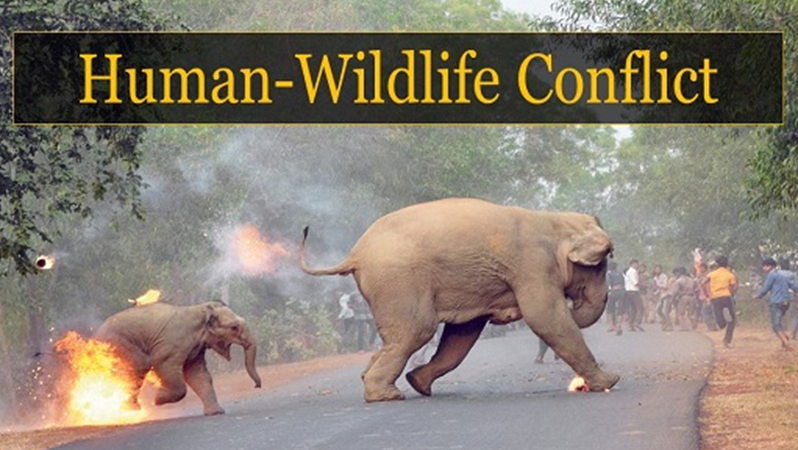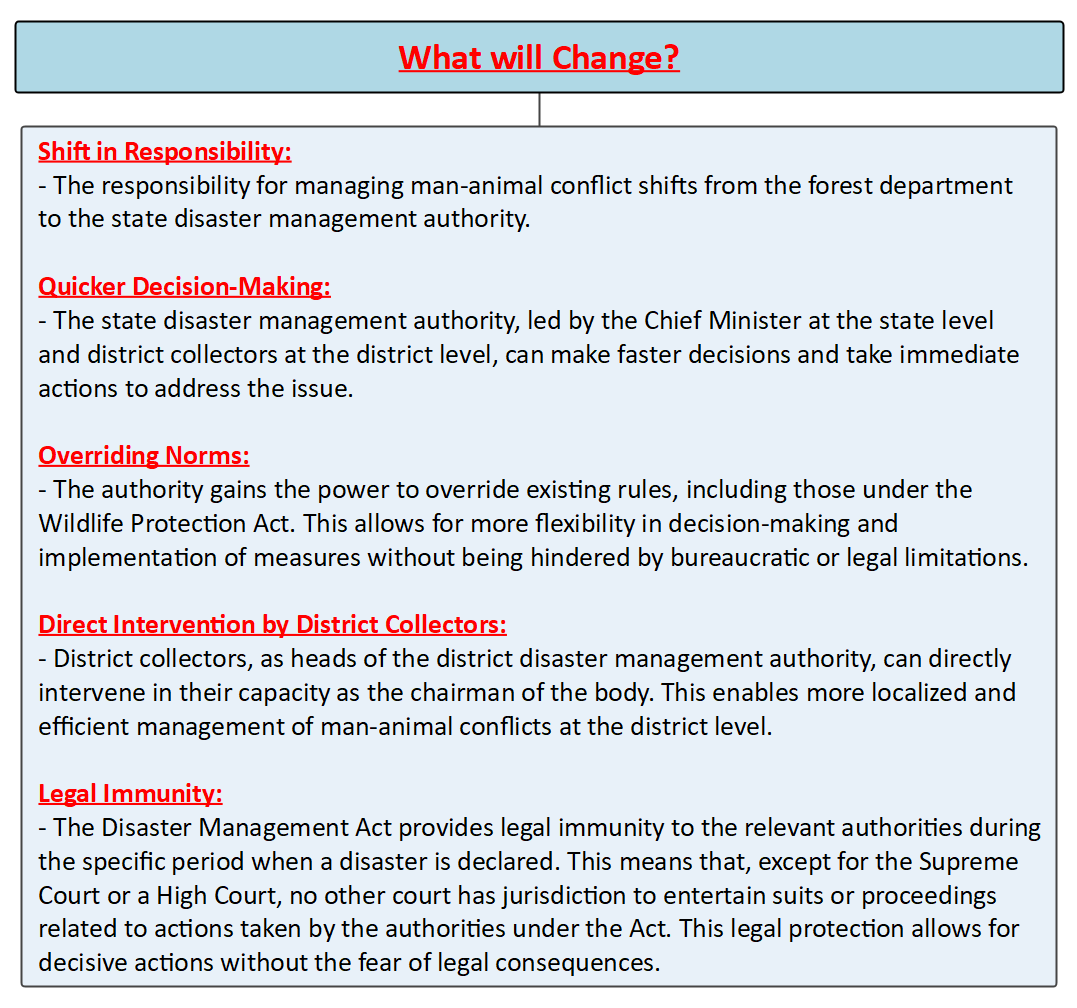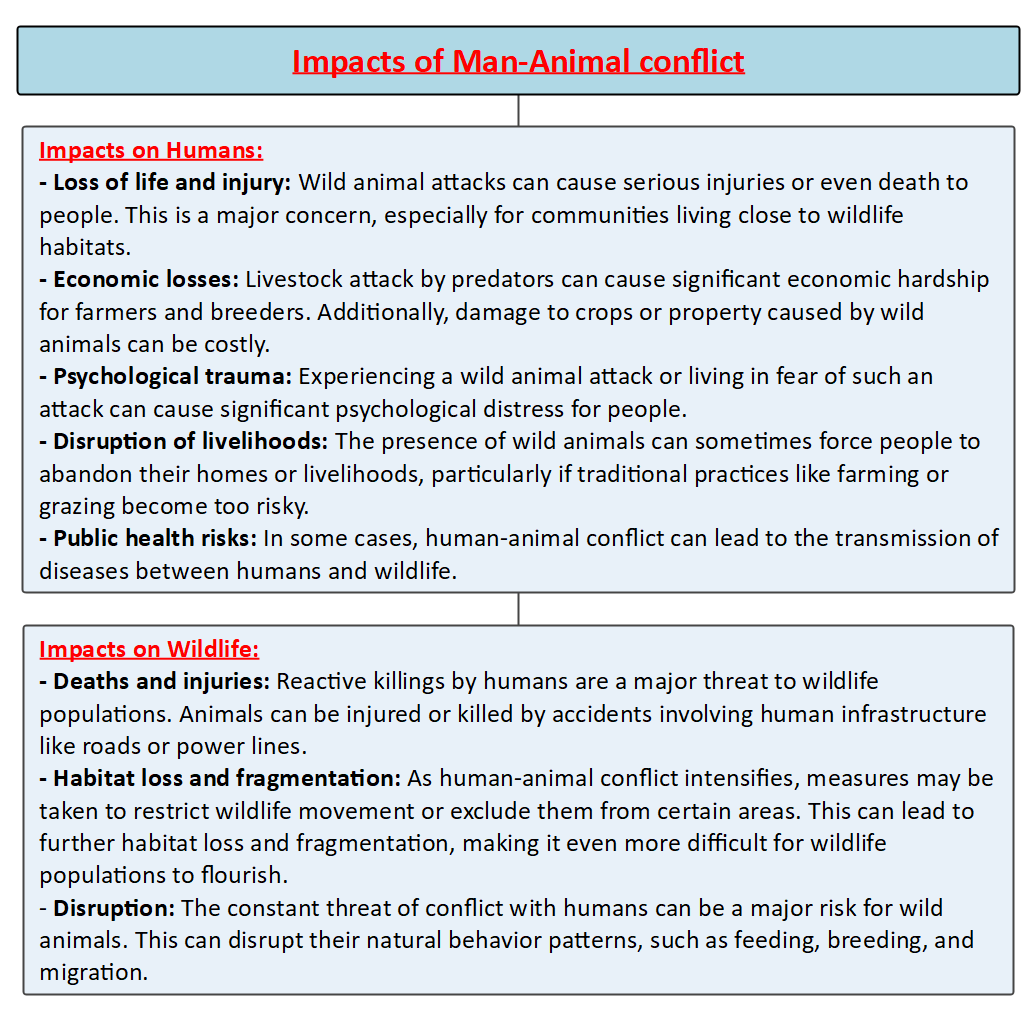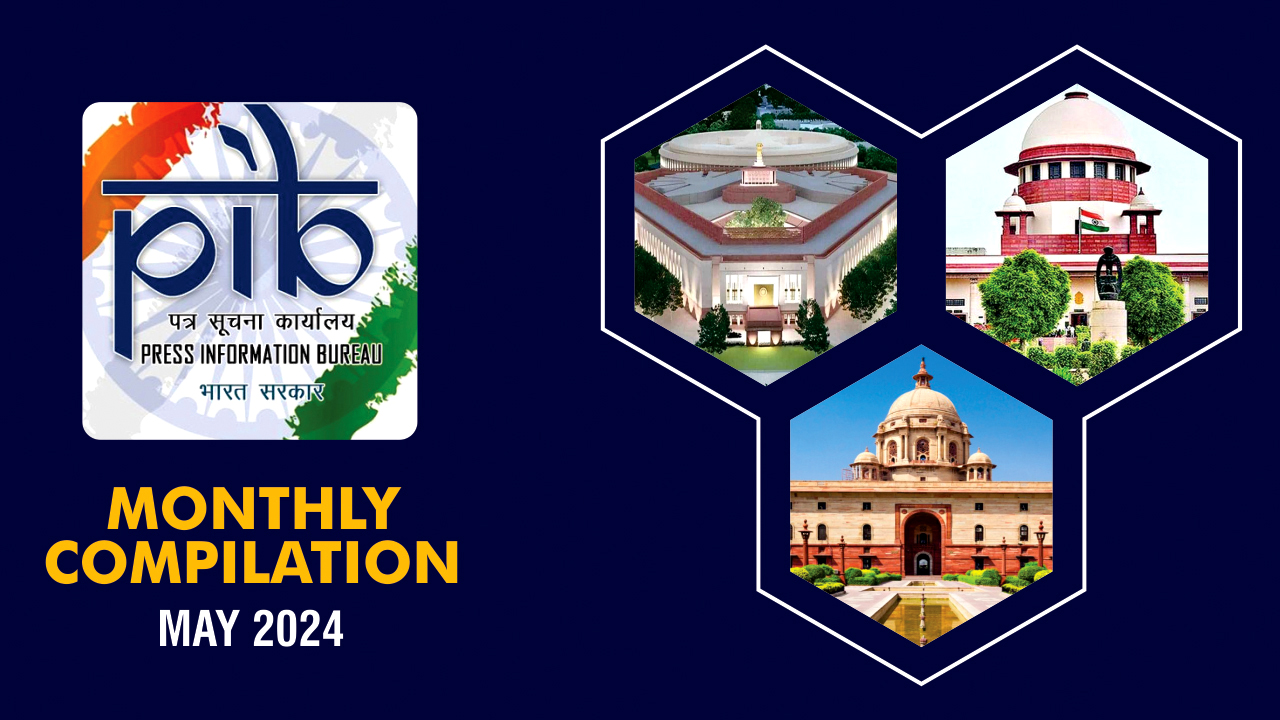Description

Copyright infringement not intended
Picture Courtesy: https://www.dailyexcelsior.com/human-wildlife-conflict/
Context: The decision of the Kerala state to declare man-animal conflict as a state-specific disaster shifts the primary responsibility from the forest department to the state disaster management authority.
Details
- The classification of man-animal conflicts as a state-specific disaster correlates with other governments naming certain circumstances as disasters. For example, Odisha announced snakebite and Kerala declared COVID-19 to be a state-specific disaster. This approach provides a specific and concentrated response to various types of crises.

Man-Animal Conflict
- Man-animal conflict is defined as negative interactions between humans and wild animals that have a negative impact on both humans and their resources, as well as wildlife and their habitats.
- It is a global issue affecting millions of people and several species around the world.
Human-animal conflict usually arises from the following:
Loss and Fragmentation of Habitat
- As human populations grow and development work expands, natural habitats decline and become fragmented. This forces wildlife to move closer to human settlements in search of food and water, increasing the likelihood of encounters.
- For example, as deforestation increases, animals that once found food and shelter within dense forests may be forced to move towards the edges of these areas, where they may come into contact with farms or villages.
Competition for Resources
- Humans and animals frequently compete for the same resources, such as water, food, and space. This competition can lead to conflicts, particularly when resources become scarce.
- For example, during periods of drought, elephants may raid crops for food, as their natural food sources dry up. Similarly, lions or wolves may prey on livestock if their wild prey populations decline.

Infrastructure Development
- The construction of roads, railways, and other infrastructure projects can interrupt wildlife passages, making it difficult for animals to move freely between their habitats. This can lead to animals becoming trapped in isolated areas with limited resources, or forced to travel through human settlements in search of food and water. Roads can also become deadly barriers for animals, resulting in collisions with vehicles.
Climate Change
- Climate change is shifting weather patterns and disrupting ecosystems, which can have a negative impact on wildlife populations. This can force animals to change their migration patterns or search for new habitats, increasing the potential for conflict with humans.
- For example, rising temperatures may cause deserts to expand, pushing animals into previously unoccupied areas where they may compete with humans for resources or come into conflict with livestock. Changes in precipitation patterns can also disrupt food availability for wildlife, forcing them to search for food in new areas.
Lack of Awareness
- Due to a lack of awareness about animal behaviour or the presence of wildlife in certain areas, sometimes, human behaviour can unintentionally provoke animal attacks.
- For instance, tourists who get too close to wild animals for photographs or visitors into nesting areas can be seen as threats by the animals, leading to defensive attacks

How to reduce man-animal conflict and promote coexistence?
- Protecting and restoring wildlife habitats and corridors to ensure adequate space and resources for wildlife.
- Implementing effective land-use planning and zoning to minimize human-wildlife overlap and conflict.
- Promoting sustainable agriculture and livestock practices that reduce crop damage and predation by wildlife.
- Developing and deploying appropriate mitigation measures such as fences, deterrents, compensation schemes, insurance schemes, etc. to prevent or reduce wildlife damage or loss.
- Enhancing human-wildlife coexistence education and awareness programs to foster positive attitudes and behaviours towards wildlife
- Strengthening human-wildlife conflict monitoring and reporting systems to collect reliable data and information for informed decision-making
- Supporting community-based conservation initiatives that empower local people to participate in managing or resolving human-wildlife conflict issues
- Encouraging dialogue and cooperation among different stakeholders to share knowledge, experiences, best practices, challenges, etc. related to human-wildlife conflict
- Investing in research and innovation to develop new tools, methods, technologies, etc. to address human-wildlife conflict challenges
- Advocating for policy and legal reforms that support human-wildlife coexistence goals and objectives

Conclusion
- There is no single solution to address the complex and diverse issue of man-animal conflict. It requires a holistic, adaptive, and collaborative approach that involves multiple stakeholders such as governments, conservation organizations, local communities, researchers, media, etc.
|
PRACTICE QUESTION
Q. Climate change is disrupting ecosystems and triggering unexpected changes in animal behaviour. How to prepare for and manage future human-animal conflicts resulting from climate change?
|














